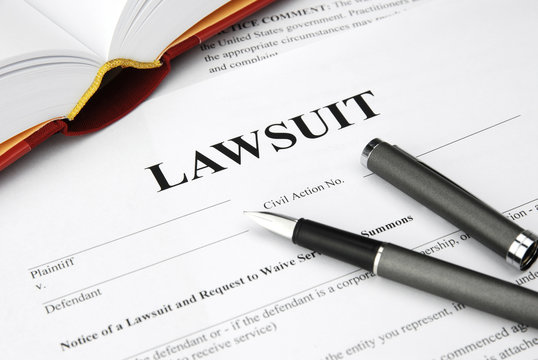Mass tort lawsuits have become an essential legal remedy for individuals who suffer harm from defective products, dangerous drugs, environmental disasters, or other corporate misconduct. Unlike class action lawsuits, where a single lawsuit represents a large group of plaintiffs, mass torts involve multiple individual lawsuits filed by plaintiffs who have similar claims but distinct injuries. This structure allows each plaintiff to maintain control over their case while benefiting from shared evidence and legal strategies.
Filing a mass tort lawsuit may seem complex, but understanding the legal process can help plaintiffs make informed decisions. Here is an overview of the key steps involved in filing a mass tort lawsuit.
Contents
1. Identifying a Mass Tort Case
The first step in filing a mass tort lawsuit is identifying whether your case fits within the framework of mass tort litigation. Mass torts typically arise when a product or action causes harm to many individuals. Common examples include defective drugs (such as Zantac), defective medical devices (like hernia mesh), and environmental hazards (like water contamination).
Mass tort attorneys at Estey & Bomberger explain that if multiple plaintiffs are experiencing similar injuries from the same product or incident, it might qualify as a mass tort. Consulting with an experienced mass tort attorney can help determine whether your claim is part of a larger group of cases.
2. Hiring an Attorney
Filing a mass tort lawsuit requires specialized legal knowledge, as these cases involve complex procedures and coordination with other lawsuits. It’s important to hire an attorney who has experience with mass tort litigation. A skilled lawyer can assess your case, gather evidence, and ensure that you are part of a broader legal strategy that strengthens your chances of a successful outcome.
When choosing an attorney, it’s crucial to consider their track record in mass tort cases, their knowledge of the specific product or issue, and their ability to work with other law firms handling similar cases.
3. Investigation and Case Evaluation
Once you’ve hired an attorney, the next step is investigating the details of your case. Your attorney will collect medical records, documentation of the harm you’ve suffered, and evidence connecting your injury to the defective product or incident. In mass torts, establishing a link between the defendant’s actions and the harm caused is essential.
During this stage, your attorney will likely be working with other attorneys in similar cases to build a shared body of evidence. This pooling of resources can make it easier to prove liability, as expert witnesses and scientific data can be used across multiple cases.
4. Filing the Lawsuit
After gathering sufficient evidence, your attorney will file your lawsuit in the appropriate court. In mass tort cases, this often involves filing in a federal court, as many mass torts are consolidated into multi-district litigation (MDL). MDL consolidates similar cases for pretrial proceedings, streamlining the process while allowing each plaintiff to retain their individual lawsuit.
The complaint filed by your attorney will outline the nature of the harm you suffered, the alleged negligence or misconduct of the defendant, and the compensation you seek. The defendant will then respond to the lawsuit, often by denying the allegations or seeking to dismiss the case.
5. Discovery Process
After the lawsuit is filed, the discovery phase begins. During discovery, both sides exchange evidence, interview witnesses, and gather information to support their case. In mass torts, discovery can be especially extensive, as attorneys for hundreds or even thousands of plaintiffs may be sharing evidence with each other.
Discovery typically includes depositions (sworn interviews of witnesses), written questions (called interrogatories), and the production of documents like medical records or corporate memos. This stage can be time-consuming, but it’s a crucial part of the legal process, as it helps build a strong case against the defendant.
6. Settlement Negotiations
Many mass tort lawsuits are resolved through settlement negotiations rather than going to trial. Once enough evidence is gathered during discovery, the defendant may seek to settle the case to avoid the risks and costs of a trial. Settlement negotiations often happen on a group-wide basis, where the defendant offers a lump sum to be divided among plaintiffs.
In mass torts, settlements are typically structured to compensate plaintiffs based on the severity of their injuries. Your attorney will negotiate on your behalf, working to ensure you receive a fair portion of any settlement.
7. Trial (If Necessary)
If a settlement cannot be reached, the case may go to trial. Mass tort cases that go to trial are typically selected as “bellwether” cases, which serve as test cases to gauge how juries respond to the evidence. The outcomes of these trials can influence future settlements or lead to additional litigation strategies.
Trials involve presenting evidence to a jury, questioning witnesses, and making legal arguments. If you win your trial, the jury will award compensation for your injuries, which could include medical costs, lost wages, and pain and suffering.
8. Appeals and Final Resolution
After a verdict is reached, either side can file an appeal, seeking to overturn or modify the decision. Appeals can delay the resolution of a mass tort case, but they also provide an opportunity to challenge errors made during the trial process.
Once all appeals are exhausted, the final resolution of your mass tort lawsuit will be determined. Whether through settlement or trial, the conclusion of your case will provide compensation for the harm you’ve suffered.
Filing a mass tort lawsuit can be a lengthy and complicated process, but it offers plaintiffs a powerful way to hold corporations accountable for widespread harm. By understanding the steps involved, from identifying a mass tort to navigating discovery and settlement, individuals can better prepare themselves for the legal journey ahead. With the right attorney and careful attention to detail, you can pursue justice and seek compensation for your injuries in a mass tort lawsuit.




